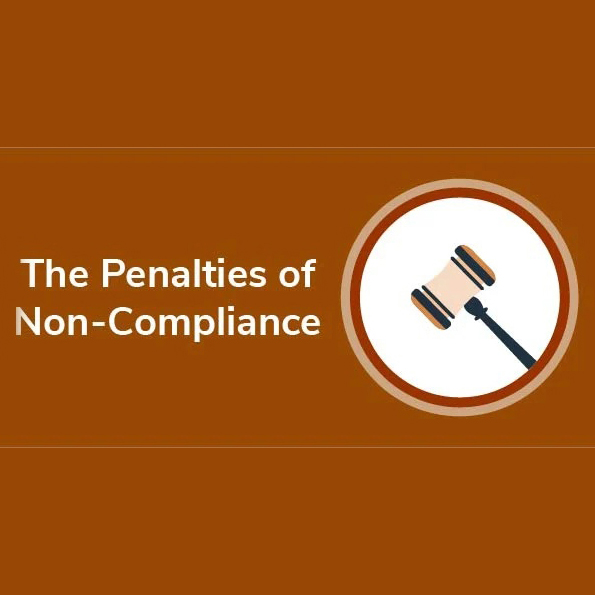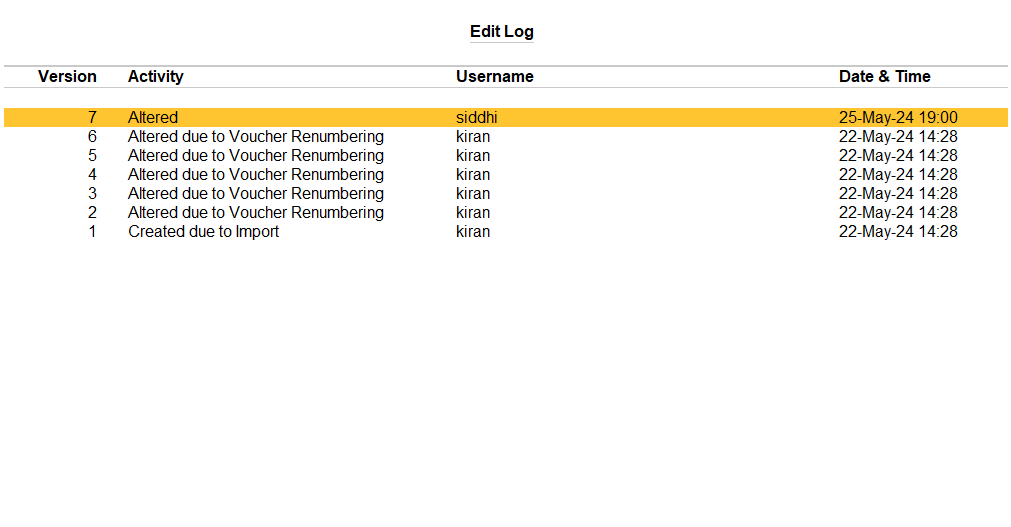02-Apr-2025 Understanding Audit Trails: The Cornerstone of Transparency and Accountability
#audittrail #transparency #indiancompaniesact #fraudpreventionAn audit trail records when, who, and what changes were made. From April 1, 2023, all Indian companies must maintain it for eight years for transparency, fraud prevention, and compliance. Non-compliance may lead to fines up to ₹5,00,000 or imprisonment.

Mandatory Audit Trails in India
Effective 1st April, 2023, all companies in India are required to use accounting software which has a feature of recording audit trail. This regulation applies to:
• Public and Private Companies
• One-Person Companies (OPCs)
• Small and Dormant Companies
• Foreign Companies
• Nidhi Companies
• Section 8 Companies
Hence, it is imperative for all the companies registered under The Indian Companies Act, 2013 to maintain and preserve audit trail for their accounting software.

The “3W” Framework of Audit Trails
Audit trails use a straightforward structure that answers three key questions:
- When: The exact date and time of an action.
- Who: The user or entity responsible for the action.
- What: The data or transaction altered, including the outcome (success or failure).
This framework is vital for processes such as financial reporting, audits, security protocols, access control and investigations.
Significance of Audit Trail
• Enhances Transparency - An audit trail ensures that financial records and processes remain transparent and auditable.
• Fraud Prevention & Detection - It makes it difficult to manipulate records without leaving evidence, thereby reducing the risk of fraud.
• Error Identification – It helps in identifying and rectifying the errors or discrepancies promptly.
• Improved Internal Controls - It encourages disciplined processes and robust controls, leading to better governance
• Regulatory Compliance - It helps organizations demonstrate adherence to statutory requirements.
How to Implement an Audit Trail

To establish an effective audit trail system:
1. Define Guidelines: Create clear principles governing audit trail use.
2. Select Tools: Use appropriate software, such as Tally Edit Log, ERP or Zoho Books.
3. Test Thoroughly: Ensure the system records activities accurately.
4. Monitor Regularly: Analyze audit trail data for compliance and security purposes.
Preservation of Audit Trail
Preservation of an audit trail refers to the systematic storage and maintenance of audit logs to ensure traceability, accountability, and compliance with regulatory requirements. It involves safeguarding records of transactions, user activities, and system modifications for a defined period.
The companies are required to retain audit trail for a minimum defined period of eight years as per the statutory requirement along with the maintenance of the audit trail.
Auditor’s Role in Audit Trails
Auditors are required to comment on the maintenance of the audit trail and its preservation in the Audit report issued by them. Thus, non-compliance would attract penalties on the companies as well as the person responsible depending on the nature and extent of the violation. Additionally, the company may also face legal consequences if the non-compliance is deemed to be intentional or fraudulent.

Penalties for Non-Compliance
For Companies:
- Fines ranging from ₹50,000 to ₹5,00,000 under Section 128(5).
- Additional penalties may be levied for repeated violations or inaccurate financial reporting.
For Directors, CFOs, and Authorized Personnel:
- Fine ranging between ₹50,000 and ₹5,00,000 for each director
- Up to 1 year of imprisonment for non-compliance which is proved to be willful and fraudulent.
Conclusion

- • The requirement for an audit trail is essential in today’s business to ensure transparency, accountability, and compliance. The organizations can effectively mitigate risks, prevent fraud, and enhance operational efficiency by maintaining a systematic record of transactions and user activities,
• With increasing regulatory mandates, businesses must implement robust audit trail mechanisms to meet compliance standards. Proper preservation, security, and access controls over audit trails not only support regulatory audits but also help in financial accuracy, cybersecurity monitoring, and forensic investigations.
• Failure to comply with the regulatory requirements may result in penalties, financial misstatements and reputational damage.

Few FAQs
1. Should the audit trail report include each and every change made by the company, or should it be based on materiality?
As per Rule 11(g), an audit trail is required for each and every transaction, creating an edit log of each change made in the books of accounts. Thus, reporting will apply to all transactions, regardless of the amount involved.
2. Whether it is sufficient if the software maintains only log of last/latest changes and entire chain of changes are not maintained?
As per requirement of Rule 3(1) of the Companies (Accounts) Rules, 2014, each and every change should be logged and should be available in the logs. Retaining only the last/ latest changes will not serve the purpose of compliance with audit trail requirements.
Example of an Audit Trail

Step 1: Initial Entry
- When: 22nd May, 2024, 14:28
- Who: User name: Kiran
- What: Created an invoice (ID: INV-1001) for ₹50,000.
Audit Log Entry:
Date: 22nd May, 2024, 14:28
User name: Kiran
Activity: Created Invoice
Details: Invoice ID: INV-1001, Amount: ₹50,000, Customer: M/s PQR Pvt Ltd
Step 2: Modification
- When: 25th May, 2024, 19:00
- Who: User name: Siddhi
- What: Updated the invoice amount to ₹55,000.
Audit Log Entry:
Date: 25th May, 2024, 19:00
User name: Siddhi
Activity: Altered Invoice
Details: Invoice ID: INV-1001, Previous Amount: ₹50,000, Updated Amount: ₹55,000
Here’s a screenshot of how an Audit Trail is reflected in the Accounting software. The details of alteration made can be seen on clicking the altered activity in the Edit log displayed:

